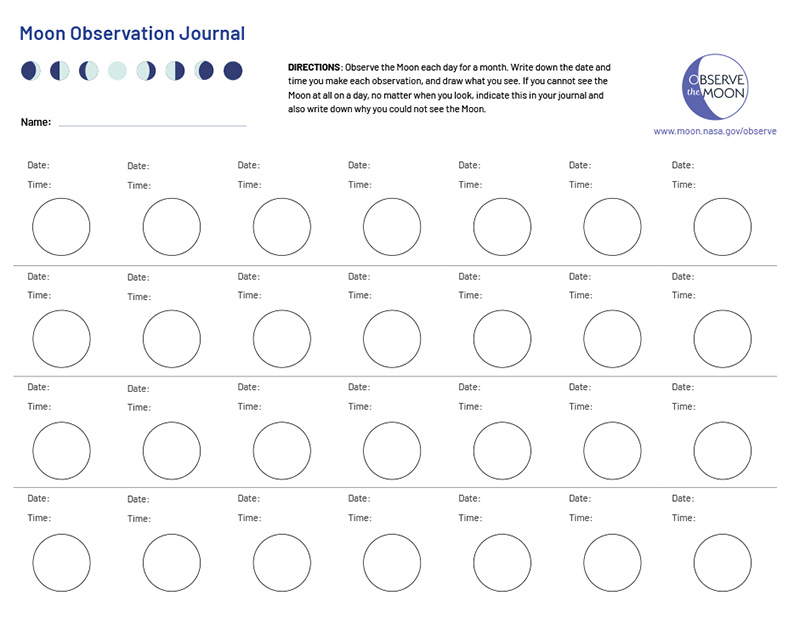Full moon blog:Black thunder and rose moon
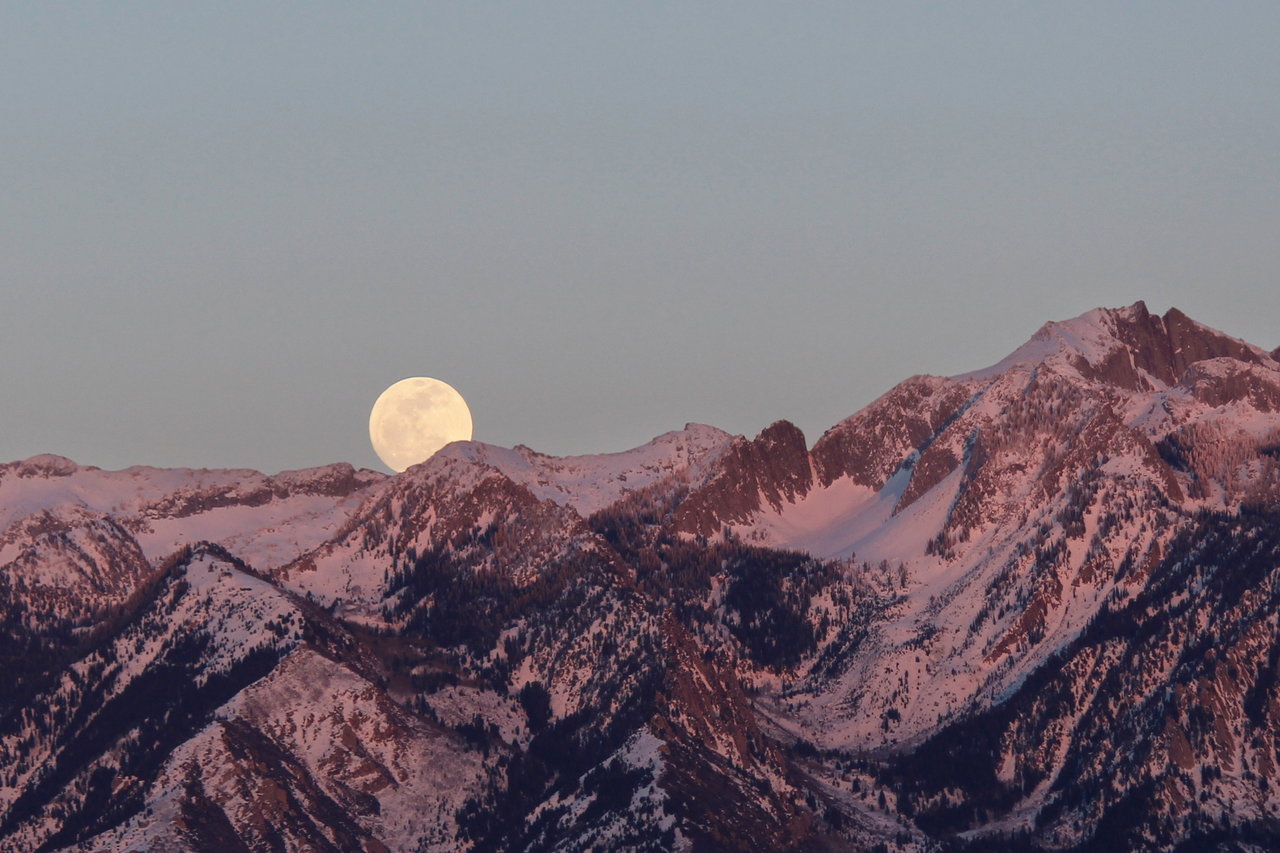 A full Moon rising over the Wasatch Mountains in Utah on March 15, 2014. Credit: NASA/Bill Dunford
A full Moon rising over the Wasatch Mountains in Utah on March 15, 2014. Credit: NASA/Bill Dunford
The Next Full Moon is the Buck Moon, Thunder Moon, or Rose Moon
The next full Moon will be just after midnight on Thursday morning, June 28, 2018, appearing "opposite" the Sun (in Earth-based longitude) at 12:53 AM EDT. The Moon will appear full for about three days around this time, from Tuesday evening through Friday morning.
The Maine Farmer's Almanac first published Indian names for the full Moons in the 1930's. According to this almanac, as the first full Moon of Summer, the Algonquin tribes in what is now the Eastern USA called this full Moon the Buck Moon. Early Summer is normally when the new antlers of buck deer push out of their foreheads in coatings of velvety fur. They also called this the Thunder Moon because of early Summer's frequent thunderstorms. Since the first full Moon of summer usually falls in July, some use these names for the full Moon in July, but it makes sense to me that Native American tribes probably tied their Moon names more to the seasons and less to the European calendar.
Another tribe has also given this full Moon a name. This tribe is geographically scattered but mostly living in the mid-Atlantic region of the United States. This tribe's language is primarily English, but with a liberal smattering of acronyms, arcane engineering terms, and Hawaiian phrases (cheerfully contributed by the former Deputy Project Manager). Comprised of people from all backgrounds, this tribe is devoted to the study of the Moon. This tribe calls June's full Moon the LRO Moon, in honor of the Lunar Reconnaissance Orbiter spacecraft they placed in orbit around the Moon 9 years ago, on June 23, 2009.
The Algonquin tribes in what is now the Eastern United States called this full Moon the Buck Moon. Early Summer is normally when the new antlers of buck deer push out of their foreheads in coatings of velvety fur. They also called this the Thunder Moon because of early Summer's frequent thunderstorms.
Europeans sometimes call the June full Moon the Rose Moon. Some believe this name comes from the color of the full Moon at this time of year. The orbit of the Moon around the Earth is almost in the same plane as the orbit of the Earth around the Sun (only about 5 degrees off). When the Sun appears highest in the sky near the summer solstice, the full Moon opposite the Sun generally appears lowest in the sky. Particularly for Europe's higher latitudes, the full Moon nearest the summer solstice shines through more atmosphere than at other times of the year. This can give it a reddish or rose color (for much the same reasons that a rising or setting Sun appears red). For the Washington, DC area, after midnight on Friday, June 29, 2018, the highest the full Moon will reach in the sky will be only 29.6 degrees above the horizon (at 1:11 AM EDT), the lowest full Moon of the year.
Since this is the Thunder Moon, a quick note on lightning safety. Most of the lighting that strikes the ground arcs from the negatively charged bottom of the storm to the ground underneath the storm. Much rarer is positive lightning, which arcs from the top of a thunderstorm to strike the ground up to eight miles away. Positive lightning can sometimes strike areas where the sky is clear (hence the term "bolt out of the blue"). Because it arcs across a greater distance it tends to be 5 to 10 times more powerful that regular ground strikes. Though positive lightning is rare (less than 5% of all lightning strikes), the lack of warning combined with its greater power tends to make it more often fatal. A good rule to follow is, if you can hear the thunder, you can be struck by the lightning. As a bicycle commuter, I am well aware that the inch or so of rubber tire between my metal bicycle and the ground will make little difference to a bolt that can arc across miles of air from the top of a thunderstorm. Be safe!
In lunisolar calendars the months change with the new Moon and full Moons fall in the middle of the lunar month. This full Moon is the middle of the fifth month of the Chinese calendar and Tammuz in the Hebrew calendar. In the Islamic calendar the months start with the first sighting of the waxing crescent Moon a few days after the New Moon. This full Moon is near the middle of Shawwal.
As usual, the wearing of suitably celebratory celestial attire is encouraged in honor of the full Moon. In addition, take care to stay safe during thunder storms.Thunderstorms over Borneo as seen by a crew aboard the International Space Station in 2014.
As Summer begins, the daily periods of sunlight have passed their longest and are beginning to shorten again. Our 24-hour clock uses the average length of the solar day throughout the year, but near the solstices the solar days (as measured, for example by noon-to-noon on a sundial) are longer. This means the earliest sunrises of the year occur before the summer solstice and the latest sunsets of the year occur after the solstice. For the Washington, DC area, rounded to the minute, the latest sunsets of the year will be at 8:37 PM EDT from Wednesday, June 20 until Thursday, July 5, 2018. On the day of the full Moon at the end of June, morning twilight will begin at 4:33 AM, sunrise will be at 5:45 AM, the Sun will reach a maximum altitude of 74.4 degrees at 1:11 PM, sunset will be one of these latest sunsets at 8:37 PM, and evening twilight will end at 9:50 PM EDT. By the day of the full Moon at the end of July, morning twilight will begin at 4:58 AM, sunrise will be at 6:05 AM, the Sun will reach a maximum altitude of 70.2 degrees at 1:15 PM, sunset will be at 8:24 PM, and evening twilight will end at 9:31 PM EDT.
On the evening of the June full Moon, as evening twilight ends (at 9:50 PM EDT for the Washington, DC area), the planet Mercury will appear about 2 degrees above the horizon in the west-northwest. If you want to see Mercury, I suggest you try looking earlier in the evening, about 30 minutes after sunset. The sky will still be bright with dusk but Mercury, which will appear just a little brighter than Saturn in apparent magnitude, should be visible. The brightest of the planets, Venus, will appear in the west (13 degrees above the horizon for the Washington, DC area). When Venus is visible in the evening, it is known as Hesperus, Vesper, or the Evening Star. The bright planet Jupiter will appear high in the south (36 degrees above the horizon for the DC area). Jupiter was at its closest and brightest for the year in May, and remains bright. The bright planet Saturn will appear in the southeast (13 degrees above the horizon for the DC area). The bright planet Mars will not have risen yet, but will rise in the east-southeast about an hour later (around 10:50 PM EDT for the DC area), just a little before Venus sets. Mars will appear brighter than Jupiter and will be growing in brightness each evening as it approaches opposition later in July.
The bright star nearly overhead will be Arcturus, the brightest star in the constellation Boötes, the herdsman or plowman. The "Summer Triangle" will be rising high in the east. The "Summer Triangle" is not a constellation but consists of three bright stars from three different constellations. Looking east, to the left is Deneb, the brightest star in the constellation Cygnus the Swan; in the upper middle is Vega, the brightest star in the constellation Lyra the Harp; and to the lower right is Altair, the brightest star in the constellation Aquila the Eagle.
As the month progresses the stars, along with Jupiter, Saturn, and Mars, will appear to shift more towards the west, while Mercury and Venus will appear to shift along the horizon from west-northwest more towards the west. Mercury will appear at its highest above the horizon at the time evening twilight ends on July 4, 2018 (3 degrees in the west-northwest for the DC area), and reach its greatest angular separation from the Sun as seen from Earth on July 12, 2018. For a short period later in July, for the DC area and similar latitudes at least (I have not checked this for all latitudes), Mars will be rising before Mercury sets, making all five of the naked eye planets visible at the same time (if you are lucky enough to have a clear view of the horizon in both the west and southeast).
By the evening of the late July full Moon, Mercury will be difficult to see in the glow of dusk, setting about 35 minutes after sunset, Venus will appear in the west about 10 degrees above the horizon, Jupiter will appear in the southwest about 29 degrees above the horizon, Saturn in the south-southeast about 25 degrees above the horizon, and Mars in the southeast about 7 degrees above the horizon. The Summer Triangle will have shifted higher in the east, with Vega appearing higher in the sky than Arcturus.
In the morning on the night of the June full Moon, as morning twilight begins (at 4:33 AM EDT for the Washington, DC area), the brightest planet in the sky will be Mars, appearing in the south-southwest (27 degrees above the horizon for DC). The planet Saturn will also be visible, appearing in the southwest (12 degrees above the horizon). The bright star Deneb, part of the Summer Triangle, will appear nearly overhead. As the month progresses, the stars and planets will appear to shift towards the west. By mid-July Saturn will be setting in the west-southwest around the time morning twilight begins. By the morning of the full Moon in July, as morning twilight begins, Mars will appear low in the southwest (about 8 degrees above the horizon for the DC area).
This summer should be a great time for planet watching, especially with a backyard telescope. Jupiter was at its closest and brightest for the year on May 8 2018, Saturn was at its closest and brightest on June 27, 2018, and Mars will be at its closest and brightest on July 27, 2018. Jupiter, Saturn, and Mars will appear to shift towards the west over the coming months, making them visible earlier in the evening sky (more suitable for sky watching with small children with earlier bedtimes). In the west, the brightest of the planets, Venus, will also grow slowly in brightness, reaching its greatest brilliance in late September 2018.
With a small telescope you should be able to see Jupiter's four bright moons, Ganymede, Callisto, Europa, and Io, shifting positions noticeably in the course of an evening. Galileo was the first person known to point the newly developed telescope at Jupiter, and he immediately noticed these moons that we now call the Galilean moons. For Saturn, you should be able to see the brightly illuminated rings as well as the motions of Saturn's moons, particularly the large moon, Titan, which has an atmosphere and lakes of liquid methane. Venus will appear gibbous, about three-fourths full, and will gradually become brighter but less full as it shifts closer to Earth, appearing half-full in August 2018.
There will be several meteor showers that should begin to be active later in July, all of them peaking after the full Moon after next. If you happen to be out in an area with dark skies and no Moon on a clear night after midnight, you just might see a meteor or two.
The Alpha Capricornids should be active from July 11 to August 10. This shower typically produces only about 10 meteors per hour, but I mention it because it has a fairly broad peak centered around July 30, and occasionally produces bright fireballs. These meteors are thought to be caused by dust from the comet 169P/NEAT that enter our atmosphere at a relatively "slow" 24 kilometers per second (54,000 miles per hour).
The Southern Delta Aquariids should be active from around July 21 through August 23, peaking around July 30 (when the nearly full Moon will interfere with seeing these meteors). This shower is best seen from the southern hemisphere, usually produces faint meteors without persistent trails, and rarely produces fireballs. The Delta Aquarids are probably caused by dust from the the short period comet 96P/Machholz or from the breakup of what are now the Marsden and Kracht Sungrazing comets that enter our atmosphere at 41 kilometers per second (92,000 miles per hour).
The Perseids should be one of the best meteor showers of the year. The Perseids should be active from July 13 to August 29, peaking around August 12. With the new Moon on August 11 this year, moonlight will not interfere with viewing the peak. Since the peak will be in August, I will say more about this meteor shower in my next Moon missive. The Perseid meteors are caused by dust from the comet 109P/Swift-Tuttle that enters our atmosphere at 58 kilometers per second (130,000 miles per hour).
Even though they are not usually visible, I include in these Moon missives information about Near Earth Objects (mostly asteroids) that pass the Earth within about 15 lunar distances, because I find it interesting that we have discovered so many. On Friday evening, June 22, 2018 at 9:05 PM EDT (2018-Jun-23 01:05 UTC), Near Earth Object 467309 (1996 AW1), between 266 and 594 meters (872 to 1,950 feet) in diameter, will pass the Earth at 17.9 lunar distances, traveling at 13.99 kilometers per second (31,303 miles per hour).
Saturday evening, June 23, 2018, the bright planet Jupiter will appear to the lower right of the waxing gibbous Moon.
On Sunday morning, June 24, 2018, at 5:06 AM EDT (2018-Jun-24 09:06 UTC), Near Earth Object 441987 (2010 NY65), between 133 and 298 meters (437 to 977 feet) in diameter, will pass the Earth at 7.3 lunar distances, traveling at 12.58 kilometers per second (28,143 miles per hour).
Monday evening, June 25, 2018, the bright star Antares will appear below and a little to the right of the nearly full waxing gibbous Moon.
Wednesday morning, June 27, 2018, Saturn will be at opposition, or opposite the Sun as seen from the Earth, effectively a "full" Saturn that rises around sunset and sets around sunrise. This is when Saturn will be at its closest and brightest for the year. With good binoculars or a small telescope, you should be able to see clearly the rings of Saturn and Saturn's large moon Titan.
On Wednesday afternoon, June 27, 2018 at 2:22 PM EDT (2018-Jun-27 18:22 UTC), Near Earth Object (2018 MX4), between 12 and 26 meters (38 to 85 feet) in diameter, will pass the Earth at 5.5 lunar distances, traveling at 7.96 kilometers per second (17,809 miles per hour).
Wednesday evening into Thursday morning, June 27 to 28, 2018, the bright planet Saturn, nearly at its brightest and closest to the Earth for the year, will appear below the full Moon. The pair will appear at their closest at around 11 PM EDT.
As mentioned above, the next full Moon will be on Thursday morning, June 28, 2018, at 12:53 AM EDT.
On Thursday morning, June 28, 2018 at 9:03 AM EDT (2018-Jun-28 13:03 UTC), Near Earth Object (2018 LN2), between 67 and 149 meters (219 to 490 feet) in diameter, will pass the Earth at between 10.4 and 10.6 lunar distances (nominally 10.5), traveling at 9.39 kilometers per second (20,995 miles per hour).
On Friday afternoon, June 29, 2018 at 2:18 PM EDT (2018-Jun-29 18:18 UTC), Near Earth Object (2018 LR3), between 15 and 34 meters (50 to 112 feet) in diameter, will pass the Earth at 6.0 lunar distances, traveling at 3.81 kilometers per second (8,518 miles per hour).
Friday night, June 29, 2018, at 10:43 PM EDT, the Moon will be at apogee, its farthest from the Earth for this orbit.
Saturday, June 30, 2018, the bright planet Mars will appear to the lower right of the waning gibbous, nearly full Moon. For the Washington, DC area, the Moon will rise in the east-southeast at 10:26 PM, Mars will rise at 10:39 PM, the Moon will reach its highest in the sky for the night Sunday morning at 3:34 AM, and morning twilight will begin at 4:35 AM EDT.
On Sunday morning, July 1, 2018 at about 2:35 AM EDT (2018-Jul-01 06:35 UTC with 3 minutes uncertainty), Near Earth Object (2018 LT6), between 97 and 216 meters (317 to 708 feet) in diameter, will pass the Earth at between 11.4 and 11.7 lunar distances (nominally 11.6), traveling at 12.95 kilometers per second (28,977 miles per hour).
On Sunday morning, July 1, 2018 at 9:07 AM EDT (2018-Jul-01 13:07 UTC), Near Earth Object (2018 LJ1), between 13 and 30 meters (44 to 98 feet) in diameter, will pass the Earth at between 13.8 and 14.0 lunar distances (nominally 13.9), traveling at 2.65 kilometers per second (5,932 miles per hour).
Wednesday evening, July 4, 2018, the planet Mercury will appear at its highest above the west-northwestern horizon for this apparition at the time evening twilight ends, about 3 degrees for the Washington, DC area.
Friday morning, July 6, 2018, the waning Moon will appear half-full as it reaches its last quarter at 3:51 AM EDT.
Friday, July 6, 2018, at about 1 PM EDT, the Earth will be at aphelion, its farthest away from the Sun in its orbit, 3.4% farther away than it was at perihelion in early January. Since the intensity of light drops off as the square of the distance, the sunlight reaching the Earth at aphelion will be about 6.5% less bright than sunlight reaching the Earth at perihelion.
Monday evening, July 9, 2018, the bright star Regulus will appear in the west just 1 degree to the lower left of the bright planet Venus, with Mercury to the lower right. By about 30 minutes after sunset (9:05 PM for the Washington DC area), Venus should be bright enough to see despite the glow of dusk, but you may need to wait a little longer for Regulus to emerge. Evening twilight will end at 9:46 PM, Mercury will set in the west-northwest at 10:01 PM, Regulus will set at 10:47 PM, and Venus will set at 10:52 PM EDT.
Tuesday morning, July 10, 2018, the bright star Aldebaran will appear just below the waning crescent Moon. For the Washington, DC area, the Moon will rise in the east-northeast at 3:29 AM, Aldebaran will rise at 3:33 AM, and they will appear to nearly touch just before morning twilight begins at 4:41 AM EDT.
Thursday, July 12, 2018, the planet Mercury will be at its greatest angular separation from the Sun for this apparition.
Thursday night, July 12, 2018, at 10:48 PM EDT, will be the new Moon, when the Moon passes between the Earth and the Sun and usually not be visible from the Earth. If you happen to find yourself in Tasmania or in the Indian Ocean between Australia and Antarctica, and if the weather is clear, you will be able to see the Moon partially blocking the Sun. In most lunisolar calendars the new month starts with the New Moon. In the Hebrew calendar days start with sunset, so Thursday evening marks the start of Av in the Hebrew calendar. In the traditional Chinese calendar days begin at midnight and the day of the New Moon is the first day of the new month, but because China is 12 hours ahead of EDT, the sixth month in the Chinese calendar starts on July 13, 2018.
Friday morning, July 13, 2018, at 4:28 AM EDT, the Moon will be at perigee, its closest to the Earth for this orbit.
In the Islamic calendar the months start with the first sighting of the waxing crescent Moon after the New Moon. Friday or Saturday evening, July 13 or 14, 2018, will mark the beginning of Dhu al-Qidah, the eleventh month of the calendar. Dhu al-Qidah is one of the four sacred months in Islam during which warfare is prohibited, hence the name "Master of Truce".
Saturday evening, July 14, 2018, the planet Mercury will appear just below the thin, waxing crescent Moon. Try looking along the horizon a little north of west as soon as the sky starts to darken with dusk. At about 30 minutes after sunset (9:03 PM EDT for the Washington, DC area), the Moon will be about 10 degrees above the horizon. By the time evening twilight ends (9:43 PM for the DC area) the pair will have shifted to the west-northwest, Mercury will only appear about a degree above the horizon, and the Moon will be less that 3 degrees above the horizon. Mercury will set at 9:50 PM and the Moon will set 12 minutes later at 10:02 PM EDT.
On Sunday evening, July 15, 2018, the bright planet Venus will appear in the west to the left of the the waxing crescent Moon, with the bright star Regulus to the lower right and the bright planet Mercury even further to the lower right (very close to the horizon, so probably difficult to see). For the Washington, DC area, evening twilight will end at 9:42 PM, Mercury will set at 9:48 PM, Regulus will set at 10:23 PM, and Venus and the Moon will set together at 10:44 PM EDT.
On Thursday, July 19, 2018, the Moon will appear half-full as it reaches its first quarter at 3:52 PM EDT.
Friday evening into Saturday morning, July 20 to 21, 2018, the bright planet Jupiter will appear about 4 degrees below the waxing gibbous Moon. For the Washington, DC area, evening twilight will end at 9:38 PM EDT, Jupiter will set Saturday morning at 1:11 AM, and the Moon will set 20 minutes later.
Tuesday evening into Wednesday morning, July 24 to 25, 2018, the bright planet Saturn will appear near the waxing gibbous Moon. For the Washington, DC area, evening twilight will end at 9:34 PM, the Moon will reach its highest in the sky at 11:08 PM, Saturn will set Wednesday morning at 3:58 AM EDT, and the Moon will set 9 minutes later.
Friday morning, July 27, 2018, the planet Mars will be at opposition, or opposite the Sun as seen from the Earth, its closest and brightest for this apparition, effectively a "full" Mars that rises around sunset and sets around sunrise.
Friday morning, July 27, 2018, at 1:44 AM EDT, the Moon will be at apogee, its farthest from the Earth for this orbit.
The full Moon after next will be on Friday, July 27, 2018, at 4:20 PM EDT. This will be a total eclipse of the Moon, but the eclipse will not be visible from nearly all of North America.
Featured Resources
Related Stories
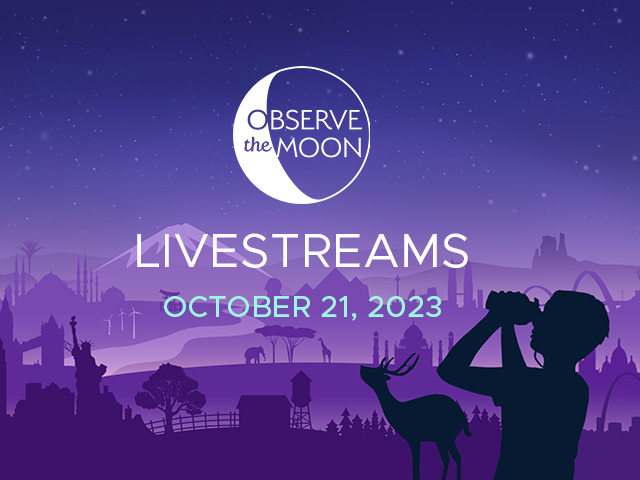
- October 21, 2023
- Live Streams for October 21, 2023
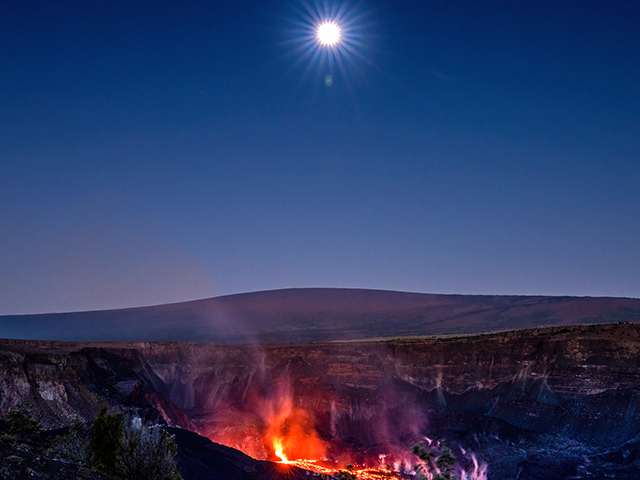
- August 24, 2023
- The Next Full Moon is a Supermoon and a Blue Moon
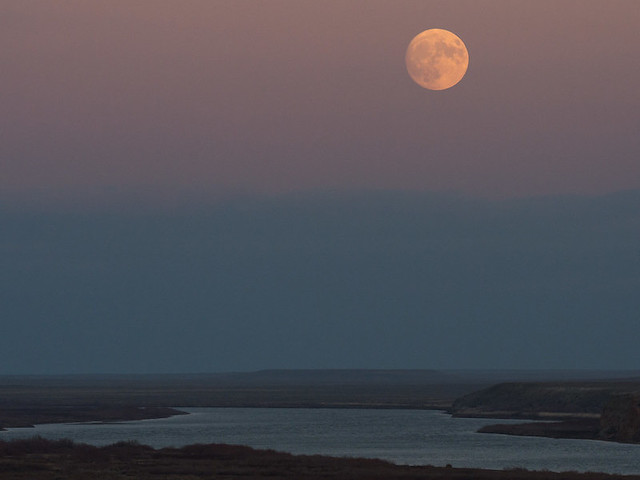
- August 17, 2023
- Super Blue Moons: Your Questions Answered
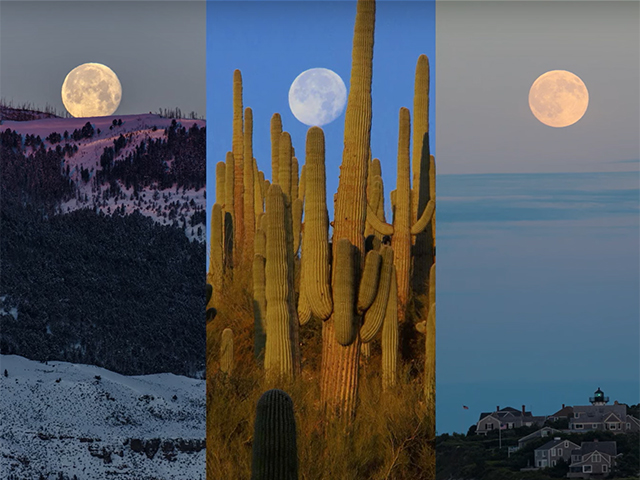
- August 1, 2023
- The Next Full Moon is a Supermoon; the Sturgeon Moon
You Might Also Like
 Eclipses
Eclipses Moon Formation
Moon Formation Moon Phases
Moon Phases Eclipses
Eclipses Moon Formation
Moon Formation Moon Phases
Moon Phases Eclipses
Eclipses Moon Formation
Moon Formation
Stay Connected
![]()
![]()
INSIDE & OUT
MOON IN MOTION
OBSERVE
EXPLORATION
GALLERIES
MORE
- Resources
- News
- Interactives
- Glossary
- IMAGE USE
- PRIVACY
- FEEDBACK
- NASA SOLAR SYSTEM EXPLORATION
- NASA PLANETARY SCIENCE
- NASA.GOV
This site is maintained by the Public Engagement Team at NASA Goddard’s Solar System Exploration Division for the Science Mission Directorate.
NASA Official: Lori Glaze
Producer: Molly Wasser
Content Development: Andrea Jones, Caela Barry, Tracy Vogel
Graphics & Web: Vi Nguyen
Data Visualizer: Ernie Wright
Design & Development: Moore Boeck
